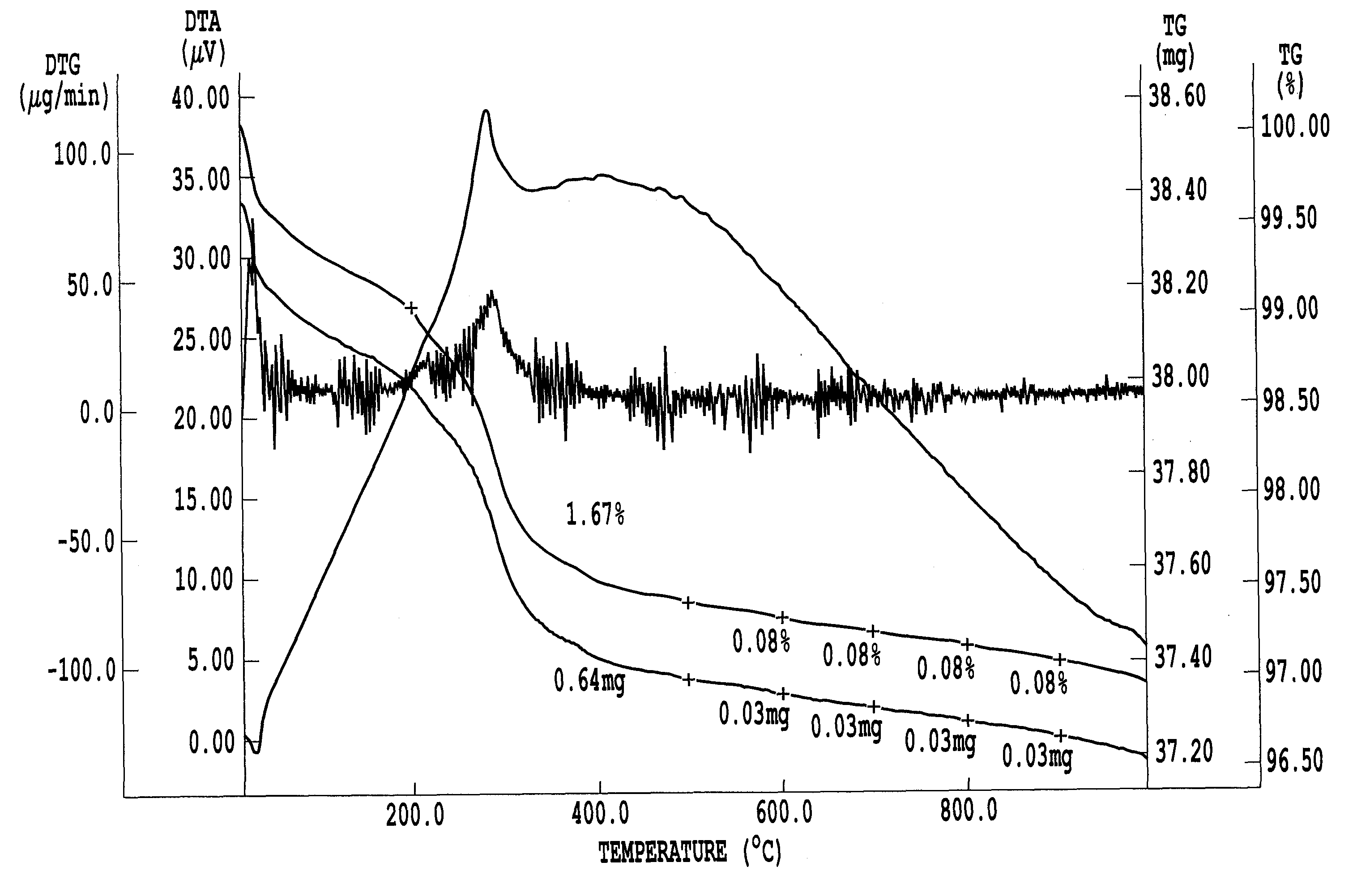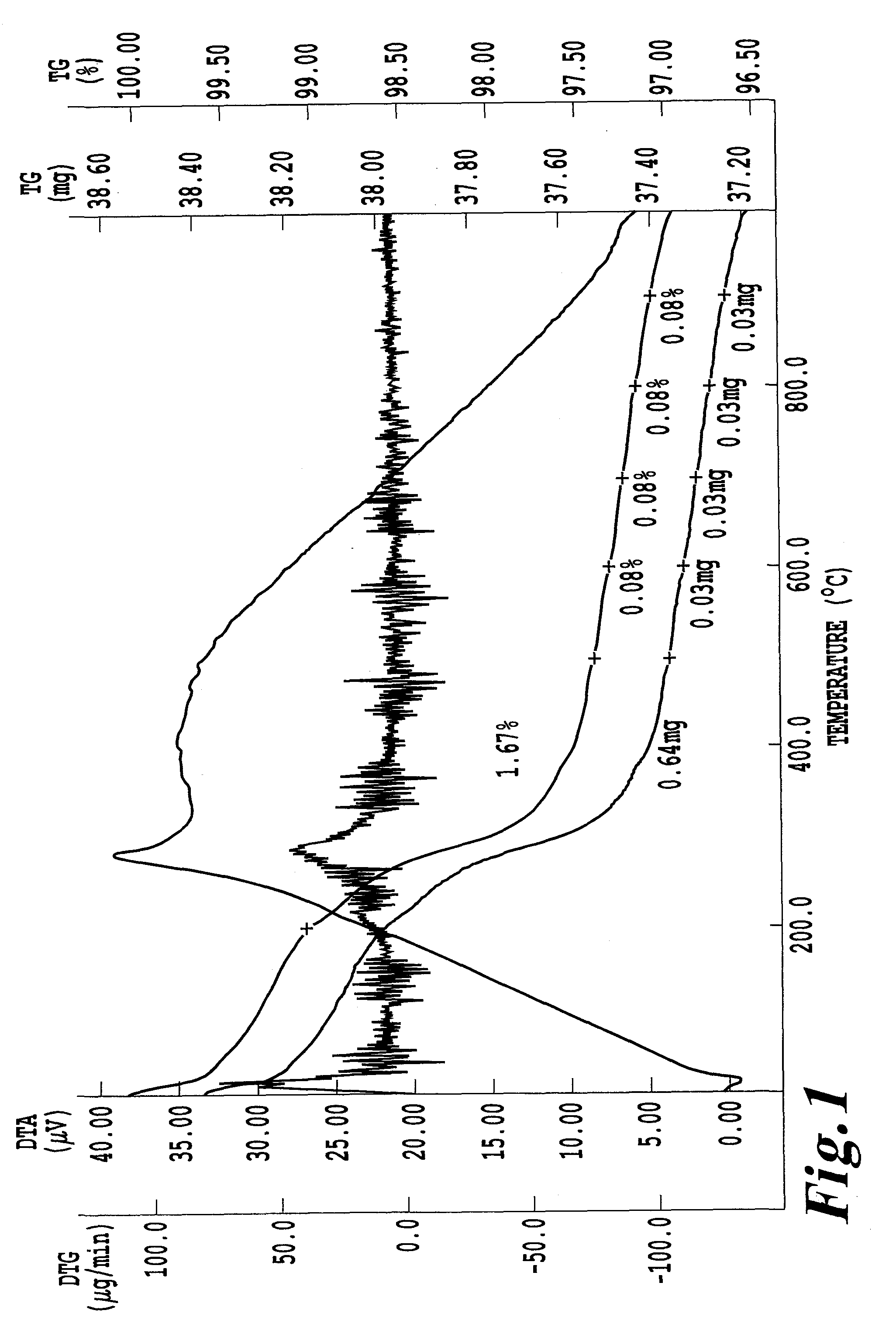Process for production of cathode active material for lithiun ion secondary battery
a technology of cathode active material and secondary battery, which is applied in the manufacturing process of electrodes, natural mineral layered products, synthetic resin layered products, etc., can solve the problems of lithium titanium composite oxide surface coating, lithium-containing composite oxide satisfying all of various characteristics, and cycle not yet obtained, etc., to achieve excellent durability, large discharge capacity and volume capacity density, and high safety
- Summary
- Abstract
- Description
- Claims
- Application Information
AI Technical Summary
Benefits of technology
Problems solved by technology
Method used
Image
Examples
example 1
[0078]In an aqueous solution having 1.93 g of magnesium carbonate, 20.89 g of aluminum maleate having an Al content of 2.65% by weight and 7.76 g of citric acid monohydrate dissolved in 23.12 g of water, an aqueous solution obtained by mixing 1.29 g of a zirconium ammonium carbonate aqueous solution having a zirconium content of 14.5% by weight and 197.32 g of cobalt oxyhydroxide with an average particle size of 13 μm and a cobalt content of 60.0% by weigh were added and mixed. The resultant mixture was dried in a constant-temperature oven kept at 80° C., and the dried mixture was mixed with 77.69 g of lithium carbonate having a lithium content of 18.7% by weight in a mortar, and fired at 990° C. for 14 hours in an oxygen-containing atmosphere, followed by crushing to obtain a lithium-containing composite oxide having a composition of Li1.02(Co0.979Mg0.01Al0.01Zr0.001)0.98O2.
[0079]To 200 g of the above lithium-containing composite oxide, a coating solution having a pH of 3.6, having...
example 2
[0087]To 200 g of a powder of a lithium-containing composite oxide having a composition of Li1.02(Co0.979Mg0.01Al0.01Zr0.001)0.98O2 prepared in the same manner as in Example 1, a coating solution having a pH of 5.5 having 11.98 g of a titanium lactate aqueous solution having a Ti content of 8.20% by weight and 1.07 g of lithium carbonate having a lithium content of 18.7% by weight dissolved in 56.95 g of water, was added, followed by drying at 120° C. for 4 hours with mixing and stirring. The obtained powder of lithium titanium-impregnated particles was subjected to heat treatment at 700° C. for 12 hours in an oxygen-containing atmosphere, followed by crushing to obtain a powder of a surface modified lithium-containing composite oxide having an average particle size D50 of 13.6 μm, D10 of 8.4 μm, D90 of 20.74 μm and a specific surface area of 0.25 m2 / g obtained by the BET method. The amount of titanium contained in the surface layer of the surface modified lithium-containing composi...
example 3
[0092]To 200 g of a powder of a lithium-containing composite oxide having a composition of Li1.02(Co0.979Mg0.01Al0.01Zr0.001)0.98O2 prepared in the same manner as in Example 1, a coating solution having a pH of 7.2 having 11.98 g of a titanium lactate aqueous solution having a Ti content of 8.20% by weight and 1.52 g of lithium carbonate having a lithium content of 18.7% by weight dissolved in 56.49 g of water, was added, followed by drying at 120° C. for 4 hours with mixing and stirring. The obtained powder was subjected to heat treatment at 700° C. for 12 hours in an oxygen-containing atmosphere, followed by crushing to obtain a powder of a surface modified lithium-containing composite oxide having an average particle size D50 of 12.7 μm, D10 of 7.7 μm, D90 of 19.3 μm and a specific surface area of 0.26 m2 / g obtained by the BET method. The amount of titanium contained in the surface layer of the surface modified lithium-containing composite oxide was 1.0 mol % to the lithium-conta...
PUM
| Property | Measurement | Unit |
|---|---|---|
| voltage | aaaaa | aaaaa |
| particle size | aaaaa | aaaaa |
| temperature | aaaaa | aaaaa |
Abstract
Description
Claims
Application Information
 Login to View More
Login to View More - R&D
- Intellectual Property
- Life Sciences
- Materials
- Tech Scout
- Unparalleled Data Quality
- Higher Quality Content
- 60% Fewer Hallucinations
Browse by: Latest US Patents, China's latest patents, Technical Efficacy Thesaurus, Application Domain, Technology Topic, Popular Technical Reports.
© 2025 PatSnap. All rights reserved.Legal|Privacy policy|Modern Slavery Act Transparency Statement|Sitemap|About US| Contact US: help@patsnap.com



